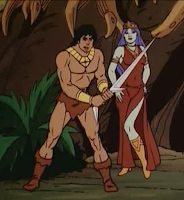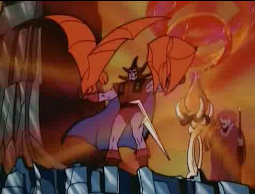In 1977, the Filmation team spearheaded by Scheimer, Prescott and Sutherland launched Space Sentinels which aired on NBC for thirteen episodes, a brief tenure which would ultimately become typical of the live-action and animated Saturday morning entertainment studio.
A trio of teenagers; Hercules, Mercury and Astrea are endowed with intergalactic strengths and capabilities and stationed inside a starship within a volcano. From this base they are allocated exigent missions by their operational superiors which they carry out on Earth and beyond. Adopting Greek and Roman mythological personas, the Space Sentinels use their individual skills and combined powers to fight enemy forces and uphold law and order in the galaxy.
One of the earliest forerunners to the programs discussed in this blog series, Space Sentinels was set in the then-futuristic 1985, nine years before Earth became irrevocably and catastrophically altered, if one is to trust the historical accounts of Filmation’s Thundarr the Barbarian, arriving a few years later in 1980. If that doesn’t confuse matters enough, 1985 also happened to see the cancellation of He-Man in addition to She-Ra’s debut!
All the beloved tropes are evident in the short-lived sci-fi superhero series including the obligatory Star Wars aping and accompanying moral lessons. The multi-racial aspect of the main characters is also noteworthy in an otherwise ethnically uniform era of cartoons.
Perhaps other trends had been established for Filmation with Space Sentinels, the ‘single season’ tradition certainly being the most obvious. Youth, strength, power and teamwork for the good of the universe would become key themes throughout many of the company’s subsequent creations. With those qualities, couldn’t one hero easily be as good as the next?
Love to hear from you.
Use the contact form on the right!



















